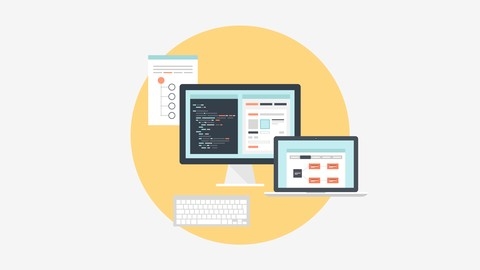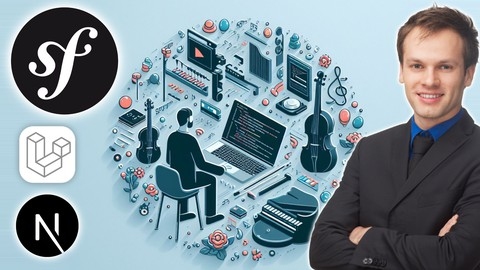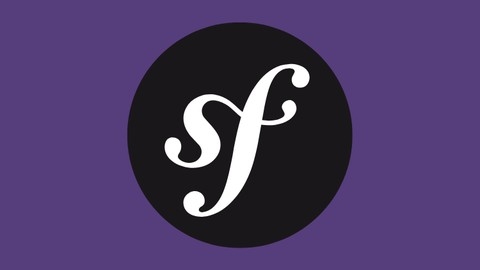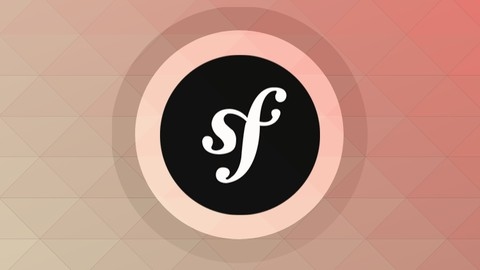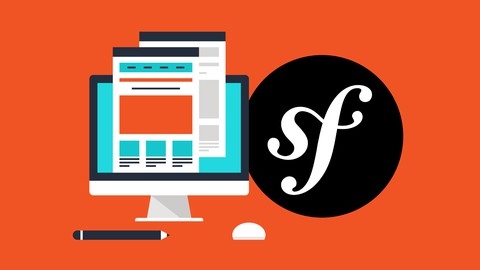The Symfony framework is a powerful PHP framework that allows developers to build robust and scalable web applications.
It provides a comprehensive set of tools and components for handling everything from routing and controllers to database interactions and security.
Learning Symfony can open doors to exciting career opportunities as a web developer, enabling you to build complex and feature-rich web applications.
Finding the right Symfony course on Udemy can feel overwhelming, with so many options to choose from.
You’re looking for a course that offers a comprehensive introduction to the framework, teaches best practices, and includes hands-on projects to solidify your understanding.
We’ve analyzed numerous courses on Udemy and have identified Learn Symfony 3 framework by practical examples as the best overall course.
This course stands out for its practical approach, starting with setting up a local environment and building real-world features like controllers, templates, and database integration.
It also covers testing, forms, and security, providing you with a solid foundation for building production-ready web applications.
While this course is our top recommendation, there are other excellent Symfony courses available on Udemy.
Keep reading to explore our curated list, which includes options tailored to different learning styles, experience levels, and specific interests within the Symfony framework.
Learn Symfony 3 framework by practical examples
You’ll start by learning how to install and configure Symfony on your local environment, familiarizing yourself with its directory structure, environments, and core concepts like bundles.
From there, you’ll dive into coding, using Bootstrap as the main theme while learning controllers, templates, and the powerful Twig templating engine.
The course covers integrating your views with controllers, setting up databases with Doctrine, and understanding Doctrine’s architecture.
You’ll generate entities, define relationships, and work with repositories to fetch and manipulate data.
The syllabus covers lazy loading, query profiling with joins, and creating custom queries.
Forms are a major focus, covering form basics, validation, generating forms from entities, and handling CRUD operations.
The course explores the service container, teaching you how to define, configure, and inject services.
You’ll also learn to create console commands, display progress, and define them as services.
Testing is emphasized, with sections on PHPUnit, configuring test environments, code coverage reports, unit testing, and functional testing.
Finally, you’ll work with Doctrine fixtures to load sample data.
Throughout, you’ll gain hands-on experience with Symfony’s powerful features and best practices.
Symfony 6 Framework Hands-On 2024
The course starts by explaining what Symfony is and why you need a framework like it for web development.
You’ll learn how to set up your development environment on both Windows and Mac, including installing PHP, Composer, Docker for running MySQL and MailCatcher, and the Symfony CLI.
Once the setup is complete, you’ll dive into the core concepts of Symfony.
You’ll learn about controllers for handling requests, routing using PHP 8 attributes, working with Twig templates and template inheritance.
The course covers generating links, using the Maker bundle to generate boilerplate code, and leveraging the powerful Symfony Profiler for debugging.
A major focus is on databases and the Doctrine ORM.
You’ll learn how to connect to a MySQL database using Docker, generate entities, run migrations, and seed your database with fixtures.
The course covers fetching, storing, updating, and deleting data using repositories, as well as the new changes in Symfony 6.3 and 6.2 related to Doctrine.
Forms are another essential topic, covering form rendering, handling submissions, flash messages, customizing rendering, form themes, and validation.
You’ll also learn about database relations in Doctrine, including one-to-one, one-to-many, and many-to-many relationships.
Authentication and authorization are covered in-depth, including hashing passwords, authenticating with forms, user roles and voters, registration and email verification, and user management features like banning users.
The course dives into more advanced topics like user profiles, likes, and following functionality, as well as complex database queries and file uploads.
You’ll learn about services, the service container, and dependency injection principles.
Throughout the course, you’ll style your application using the popular Tailwind CSS framework, adding features like breadcrumbs and custom form themes.
The course wraps up with a debugging section, covering the Symfony debug command and inspecting the service container.
Symfony 5 - The complete Guide for Beginners
You’ll start with an introduction to Symfony and why it’s a popular PHP framework.
The course walks you through setting up your development environment on Windows or Linux, so you’re ready to dive into Symfony.
From there, you’ll learn the core components of Symfony like controllers, routing, views with Twig templates, and working with databases using Doctrine.
The course builds a real-world web project step-by-step, teaching you how to create pages, use Bootstrap for styling, set up a database and entities, handle forms and file uploads, implement security and authentication, and even send emails.
Along the way, you’ll take quizzes to reinforce what you’ve learned about Symfony’s core components.
By the end, you’ll have built a complete website using best practices.
For more advanced users, the course covers topics like CRUD operations, integrating the Easy Admin bundle, using the Query Builder, creating services, and implementing validation.
Building web APIs with Symfony
You’ll start by setting up your local development environment and learning how to work with a Git repository.
Next, you’ll dive into the fundamentals of the Symfony framework, including the Object-Relational Mapping (ORM) system Doctrine.
You’ll learn how to define entities, create database migrations, and handle relationships between entities.
This will give you a solid foundation for working with data in your API.
The course then moves on to controllers, which are the heart of your API.
You’ll learn how to use the Symfony Serializer component to convert your entities into JSON or XML representations, and the Validator component to ensure data integrity.
You’ll also learn how to create endpoints for the Composer package manager and write tests for them.
Authentication and authorization are crucial aspects of any API, and the course covers them in depth.
You’ll learn how to create a User entity and associated CLI commands, as well as how to implement an authentication controller.
The course also covers access tokens and using Redis for token storage, as well as implementing a stateless firewall and writing tests for authorization.
Finally, the course covers API documentation using OpenAPI and Swagger.
You’ll learn how to use the Nelmio bundle to generate documentation automatically, and how to use OpenAPI attributes to customize the documentation.
You’ll also learn how to set up a local UI for exploring and testing your API.
Throughout the course, you’ll work with key Symfony components like Doctrine, the Serializer, the Validator, and the Security component.
You’ll also learn how to write tests to ensure your API is working correctly.
Symfony 6 Framework: Getting Started (Hands-on 2024)
You’ll start by understanding the basics of client-server architecture and how requests and responses work in PHP.
The course then dives into installing Symfony and creating your first pages.
You’ll learn about routing, which allows you to map URLs to specific actions in your application.
The course covers controllers, where you’ll handle user input and generate responses.
Templating with Twig is also covered, allowing you to create dynamic HTML and JSON templates.
The course introduces Doctrine, Symfony’s ORM (Object-Relational Mapping) tool, which helps you interact with databases.
You’ll learn how to create entities, perform CRUD operations, and use relations between entities.
Fixtures are also covered, which allow you to populate your database with sample data.
Forms are an essential part of web development, and the course teaches you how to create and validate forms in Symfony.
You’ll also learn about CLI commands, which allow you to create custom commands that can be run from the terminal.
Services are covered in-depth, teaching you how to create and use services in your application.
This includes rendering Twig templates from services and using the ValidatorInterface for validation.
The course also covers APIs, teaching you how to create and consume APIs using Symfony.
You’ll learn about tools like Postman and PhpStorm’s HTTP client, as well as how to output data in different formats like JSON and Twig.
Testing is an important aspect of software development, and the course covers unit tests, integration tests, and functional tests.
You’ll learn how to write tests for your Symfony application and the benefits of each type of test.
Finally, the course briefly touches on alternative frameworks like Laravel and Next.js, giving you a broader perspective on the web development landscape.
Symfony 6 (2023) - Build Microblog Application from Scratch
The course starts by introducing the latest features of PHP 8, such as match expressions, named arguments, and null-safe operators.
You’ll learn how to set up Symfony with Docker or XAMPP, and install necessary packages like TailwindCSS for styling.
The course dives into building the core functionality of the microblog, including controllers, routing, and views.
You’ll create HTML templates using Twig and integrate components like headers, menus, and search bars.
As you progress, you’ll build features like displaying posts, allowing users to follow each other, and implementing like/dislike functionality.
You’ll learn to perform CRUD operations, optimize queries, and use fixtures to seed example data.
The course also covers file uploads, refactoring code into services, and implementing live components with Alpine.js.
Security is emphasized, covering user registration, login, logout, and securing routes.
You’ll build HTML forms for various actions like adding posts, editing user profiles, and changing passwords, with proper validation.
The course explores advanced topics like events, listeners, notifications (email, Pusher), and building an API for login, post creation, and user registration.
You’ll learn how to deploy the application to production.
Testing is a crucial aspect, with lessons on unit tests (including mocking), functional tests for secured pages, form submissions, and testing the API.
The instructor provides the full source code of the application at the end.
Symfony Web Development Complete Guide: Beginner To Advanced
You will learn how to install and configure Symfony, work with HTTP requests and responses, and understand core features like routing, controllers, views, and entities (models).
The course dives deep into Doctrine ORM, covering CRUD operations, relationships, query builders, eager loading, table inheritance mapping, and polymorphic queries.
You will also explore services, including service containers, autowiring, constructor injection, service arguments, configuration, setter injection, property injection, lazy services, aliases, and tags.
Additionally, you’ll learn about caching, the console, and the profiler tool.
The course covers forms, including creating, rendering, validating, and handling form events.
You’ll learn about email integration, user authentication, and authorization using annotations, configuration files, and voters.
Testing is also covered, with sections on unit tests, functional tests, mocking objects, and code coverage reports.
The syllabus includes building real-world applications, such as a to-do list app and a video sharing platform, where you’ll implement features like video categories, comments, likes/dislikes, subscriptions, user registration, file uploads, and more.
You’ll also learn about events, listeners, translations, caching, and deployment to Heroku.
The course covers integrating with third-party services like PayPal and building a REST API with Symfony and API Platform.
Finally, you’ll explore the Symfony Messenger component, RabbitMQ, and CQRS (Command Query Responsibility Segregation) architecture.
Symfony API Platform with React Full Stack Masterclass
This course is a full-stack masterclass that will take you from the basics of PHP and Symfony to building a full-fledged API with React and Redux.
You’ll start by learning modern PHP concepts like namespaces, classes, inheritance, and dependency injection.
Then, you’ll dive into the Symfony framework, covering controllers, routing, databases with Doctrine ORM, and generating entities.
The core of the course revolves around API Platform, a powerful tool for building APIs rapidly.
You’ll learn to create resources, handle operations like GET, POST, PUT, and DELETE, and implement authentication using JWT tokens.
As you progress, you’ll tackle more advanced topics such as authorization, data validation, serialization groups, subresources, relations, and custom serialization.
The course also covers custom operations like password reset, user account confirmation (including email sending), and file uploads for handling images.
You’ll learn techniques for filtering, sorting, and paginating collections, as well as error handling and logging.
For the admin panel, you’ll integrate EasyAdmin and customize it to fit your needs.
The course dedicates sections to unit testing with PHPUnit and functional testing with Behat, ensuring you can write robust and maintainable code.
The final part focuses on building a React Redux application to consume the API you’ve built.
You’ll learn Redux fundamentals, making API requests, handling authentication, creating forms with redux-form, implementing pagination, and more.
Throughout the course, you’ll work on a real-world project, building an API for a blogging platform with features like user authentication, blog posts, comments, images, and user roles.
Symfony 5 PHP Framework
This course covers everything you need to build a full-featured e-commerce application using the Symfony PHP framework.
You’ll start by setting up your development environment, including installing Symfony and its command-line interface.
Next, you’ll dive into the core concepts of Symfony, such as controllers, routing, and templating with Twig.
You’ll learn how to create pages, handle user input, and work with static assets like CSS and JavaScript.
One of the key focuses is integrating a database using Doctrine ORM.
You’ll set up a local database or use AWS, create entities for products and orders, and learn how to query and display data.
The course covers handling errors and customizing error pages.
You’ll build essential e-commerce features like a shopping basket, checkout process with forms and validation, and order processing.
Sessions are used to manage the basket across page loads.
Towards the end, you’ll integrate email functionality to send order confirmations, leveraging the email and transport layers in Symfony.
Throughout the course, you’ll work with various Symfony components and third-party packages like Node.js, SASS, and Encore for asset management.
The course provides a solid foundation in Symfony’s architecture and best practices.
Symfony beginner guide with example project.
This course is a comprehensive guide to learning Symfony, a popular PHP web application framework.
It starts with the basics of setting up Symfony and creating your first application.
You’ll learn about the file structure, controllers, routing, and how to use the Twig templating engine.
From there, the course dives into Doctrine, which is the Object-Relational Mapping (ORM) tool used in Symfony for interacting with databases.
You’ll learn how to set up Doctrine, create entities (which represent database tables), and use migrations to update your database schema.
The course covers persisting data to the database, querying records, updating and deleting records.
Next, you’ll learn about forms in Symfony.
The course covers enabling forms, creating forms manually and from entities, rendering forms in Twig templates, handling form submissions, validation, and customizing form rendering.
The course then explores Doctrine relations, which allow you to define relationships between entities (like one-to-many or many-to-many).
You’ll learn how to update your entities to include relations.
To solidify your learning, the course guides you through building a Todo App using the concepts you’ve learned.
This includes creating the UI with Twig templates, loading assets with Webpack and Sass, using fixtures to seed fake data, and implementing CRUD (create, read, update, delete) operations.
Finally, the course covers the event system in Symfony, which allows you to listen for and respond to events that occur during the application’s lifecycle.
You’ll learn about event listeners, event subscribers, and how to create custom events.
Throughout the course, you’ll work with key Symfony components like Doctrine, Twig, Forms, Webpack, and the Event system.
The hands-on project will help you solidify your understanding of these concepts.
